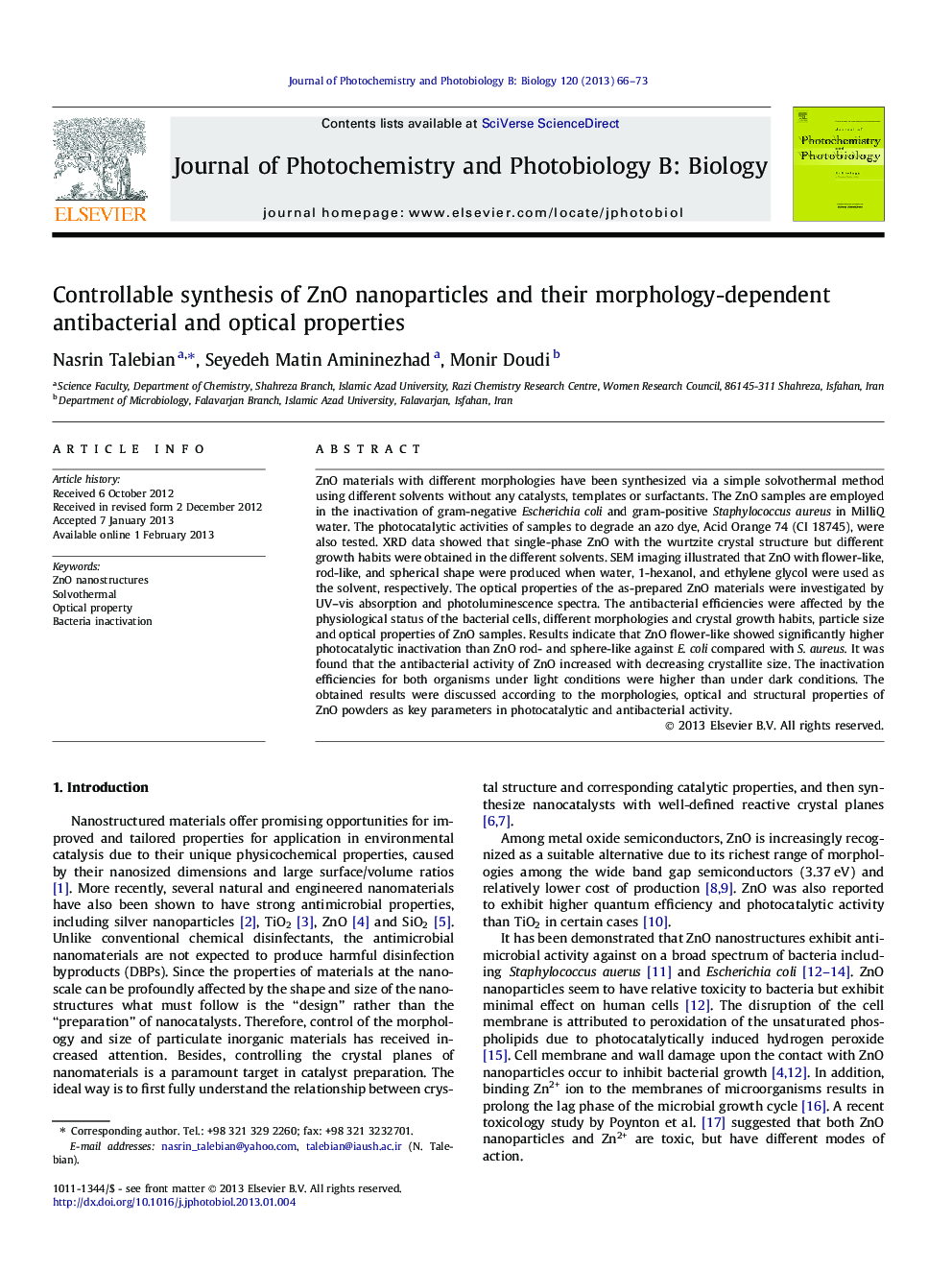| Article ID | Journal | Published Year | Pages | File Type |
|---|---|---|---|---|
| 30630 | Journal of Photochemistry and Photobiology B: Biology | 2013 | 8 Pages |
ZnO materials with different morphologies have been synthesized via a simple solvothermal method using different solvents without any catalysts, templates or surfactants. The ZnO samples are employed in the inactivation of gram-negative Escherichia coli and gram-positive Staphylococcus aureus in MilliQ water. The photocatalytic activities of samples to degrade an azo dye, Acid Orange 74 (CI 18745), were also tested. XRD data showed that single-phase ZnO with the wurtzite crystal structure but different growth habits were obtained in the different solvents. SEM imaging illustrated that ZnO with flower-like, rod-like, and spherical shape were produced when water, 1-hexanol, and ethylene glycol were used as the solvent, respectively. The optical properties of the as-prepared ZnO materials were investigated by UV–vis absorption and photoluminescence spectra. The antibacterial efficiencies were affected by the physiological status of the bacterial cells, different morphologies and crystal growth habits, particle size and optical properties of ZnO samples. Results indicate that ZnO flower-like showed significantly higher photocatalytic inactivation than ZnO rod- and sphere-like against E. coli compared with S. aureus. It was found that the antibacterial activity of ZnO increased with decreasing crystallite size. The inactivation efficiencies for both organisms under light conditions were higher than under dark conditions. The obtained results were discussed according to the morphologies, optical and structural properties of ZnO powders as key parameters in photocatalytic and antibacterial activity.
► Solvent-dependent photocatalytic and antibacterial properties of solvothermally synthesized ZnO powders. ► ZnO samples with different morphologies displayed different crystal growth habits. ► Flower-like ZnO showed higher antibacterial activity against Escherichia coli and Staphylococcus aureus. ► The influence of solvent polarity on the morphology-dependent bacteria inactivation were discussed.
